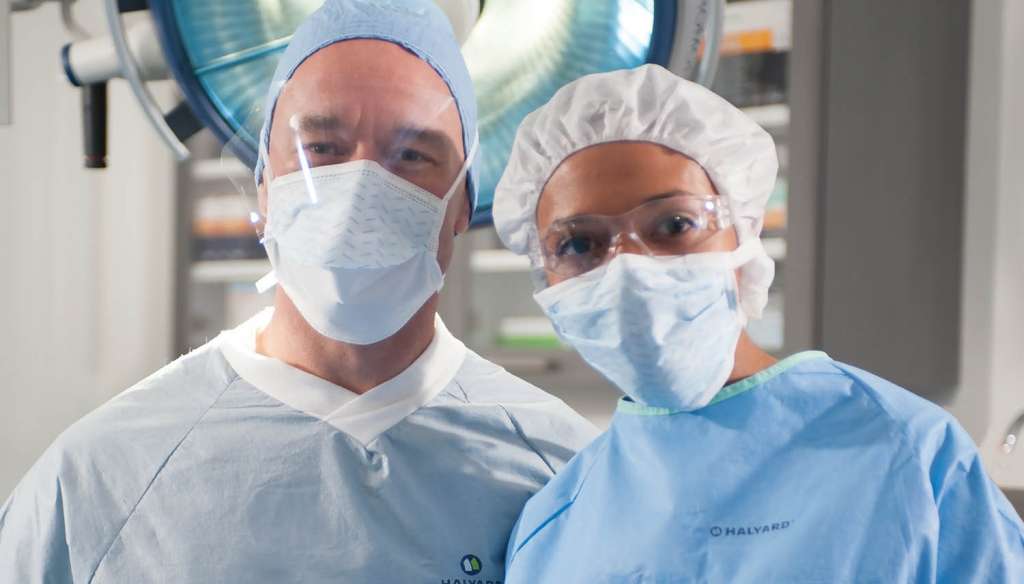The Pressing Need to “Get Back to Basics”
Who hasn’t struggled with the demands of mask wearing the last few years?
During the shifting headwinds of the COVID-19 pandemic, everyone became acutely aware of the need for respiratory protection and of the difficulties of obtaining masks. Simply put, pandemic supply chain shortages took away mask choice from clinicians, which meant sacrificing protection, quality, and comfort. It also led healthcare personnel away from following recommended guidelines for facial protection as they often grabbed whatever was made available.
While facial protection availability has increased, habits picked up during the pandemic and supply shortages remain. As healthcare professionals shifted away from following recommended guidelines it increased their risk for transmission and infections.
Need to get back to mask for the task
With an adequate amount of available facial protection as we transition away from COVID protocols to a more normal state, those in healthcare settings should return to selecting facial protection that is appropriate for the situation in which they will be working in.
Selecting the right mask starts with ASTM International Standard F2100. Guidance for mask material performance used in all U.S. healthcare facilities are assigned Levels 1-3, with Level 3 offering the highest level of fluid resistance.1 These standards cover everything from breathability to fluid protection.
The comfort and protection of “procedure masks” with ear loops play a critical role in the hospital infection control arsenal and for patient and visitor protection. But the rigors of the OR typically require a tie mask with the right ASTM Level (1-3) fluid protection for the procedure.1
N95 masks were famously in high demand but short supply during the pandemic. As cases continue to decline there is no longer any significant supply constraints for N95s in today’s marketplace, according to industry experts.
Moreover, a return to OSHA mandated annual fit testing for N95s, which was suspended at one time, is as important as ever, if not more so.
It’s crucial for patient and staff safety that healthcare professionals strictly adhere to all governing guidelines, with the appropriate protection needed for the setting and procedure. For instance, if a procedure entails a lot of fluid or splash, wearing an ASTM Level 3 mask is essential. Same as ever.
If healthcare staff is not finding the right masks available these days, they should raise that as a point of concern within their facility. After all, it’s a question of both personnel and patient safety.
What led to the shift in practice?
A 2022 study commissioned by Owens & Minor and completed by The Standpoint Group looked at facial protection wearing trends. The study surveyed 100 surgical professionals on their use of facial protection before the pandemic (2019) compared to mid-2022, as the pandemic began to loosen its grip.
The study revealed that many who said they formerly adhered closely to facial protection guidelines are reporting they haven’t yet returned to best practices. The “new normal” can be hard to buck, as we all know.
One of the biggest shifts was around re-wearing masks. Of all respondents, 40% said that “habit established during the pandemic” as the most common reason for re-wearing all types of masks. Plus, half of support staff said “current or expected shortages” were reasons they continued to re-wear masks.
According to the Owens & Minor report, the mean number of wears before replacing a mask post-pandemic was three. That’s two too many for a single-use healthcare product.
What’s going on here?
“There was less discipline by necessity to deal with the crisis, but those bad habits around reuse of masks and double masking were developed and have persisted,” explains Jason Burnham, Product Director for the HALYARD* brand of facial protection at Owens & Minor, a leading facial protection and PPE manufacturer. “As a result, we saw more frequent instances of a lack of proper sterility and transmission control processes.”
Supply is healthy
Even as the tripledemic has improved recently, the challenges from sub-variants, RSV and flu are likely to persist. Diligence is needed now more than ever for proper facial protection.
“The supply chain issues for all medical masks have virtually ceased, yet many healthcare professionals, including purchasing departments, continue to carry the perception that supplies are still limited,” says Burnham.
Today, there is simply no reason for those in healthcare not to have the facial protection they need. That’s exactly what “Getting Back to Basics” means.
Sources:
ASTM International Issuing Body Standard F2100, “Standard Specification For Performance of Materials Used in Medical Face Masks,” Retrieved December 2 ,2022 https://www.astm.org/f2100-21.html







